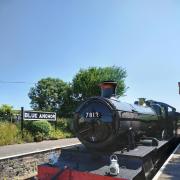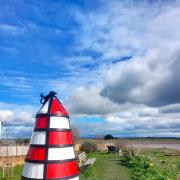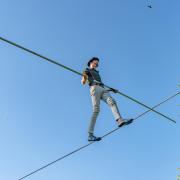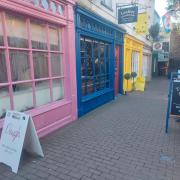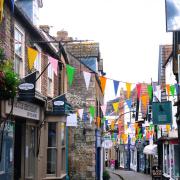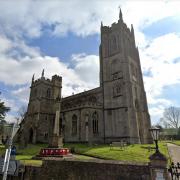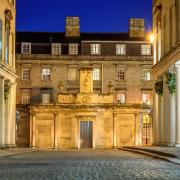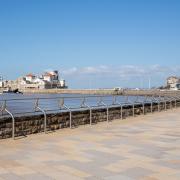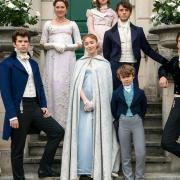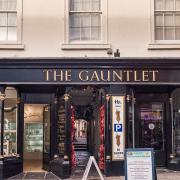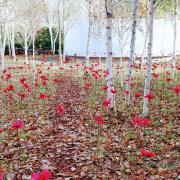Join historical novelist Fiona Mountain as she explores the extraordinary life of Eleanor Glanville, the first lady of British natural history. Photo by Stephen Moss.
Join historical novelist Fiona Mountain as she explores the extraordinary life of Eleanor Glanville, the first lady of British natural history. Photo by Stephen Moss.
The plight of Britain's butterflies, which have seen numbers decline to record lows after the wet summers of 2007 and 2008, has prompted UK charity Butterfly Conservation to launch a legacy campaign to encourage people to leave money to the charity in their wills. To this end, they are highlighting the story of Somerset's Eleanor Glanville, who also happens to be the subject of my new novel, Lady of the Butterflies. Eleanor is arguably the first lady of British natural history and is certainly one of the most important entomological pioneers. But though one of the UK's rarest butterflies (the Glanville Fritillary) is named after her, she appears as a mere footnote in the history books, best remembered for the fact that her children, led by her son Forest, successfully overturned her will on the grounds that her passion for studying butterflies was an obvious sign of insanity! Intriguing as that is, she deserves to be remembered for so much more. Eleanor was born just after the Civil War, a time when women were scorned for having an interest in science, seen as a disgrace to their sex and family if they dabbled in such unsuitable pursuits and were even believed to cast malign influences over experiments. Butterflies themselves were seen as sinister creatures that represented the souls of the dead. To make matters worse for Eleanor, she lived not in London, home to the newly established scientific hothouse, the Royal Society, but in the isolated, misty wetlands of the Somerset Levels.It is a great testament to her passion, bravery, skill and determination, then, that she was so well-respected amongst her peers. 'A lady came to town with the noblest collection of butterflies which has shamed the rest of us,' wrote naturalist William Vernon. And renowned apothecary-turned-naturalist James Petiver, who produced the first work devoted to English Lepidoptera and was responsible for naming admirals and tortoiseshell butterflies, counted her a dear friend. His letters and notes demonstrate that Eleanor kept accurate records of larvae and food plants and was one of the first to describe breeding butterflies, rearing a number of species which are still identifiable from her descriptions. But how much do we really know about Eleanor Glanville? In many ways her life was even more sensational than her death. She came from a distinguished family and inherited the manor of Tickenham Court from her mother, while her father, Major Goodricke, had fought for the Parliamentarians. After the death of her first husband, Edmund Ashfield, Eleanor was left with two small children to care for and she then married Richard Glanville, whose family owned estates in Suffolk, and with whom she had a daughter and a son. It is here that her story takes a dramatic twist. Glanville had a mistress, Sarah Street, and according to some reports, he entered into a bigamous marriage with her after a service performed by a clergyman who was shown a bogus affidavit testifying that Eleanor was dead. Glanville then kidnapped his son, who was apprenticed to James Petiver, in order to bribe the lad to disinherit himself. Glanville blackmailed the boy with numerous threats, including starvation and being shipped off to Barbados as a slave, and Eleanor embarked on a desperate search for him, which made frequent changes of hiding places necessary. It is because she was convinced that her other children were in collusion with Glanville that Eleanor wrote them out of her will. But was she actually mad? Her mind had undoubtedly been affected by the ordeal, but the 'whimsy-headed' behaviour she was accused of is far more likely to be a sign of eccentricity than lunacy. Seventeenth-century country folk were baffled by a lady of property who paid Tickenham girls to collect 'worms and flies' and the hundred or so affidavits presented at the Wells assizes make it clear that she suffered great prejudice. She was accused of not living 'according to her station', of mismanaging her estates and having to send out to a public house for drink instead of brewing herself as a gentlewoman should. She was also observed wandering the downs 'without all necessary clothes like a gypsy' and beating hedges with a pole while apprentice girls held sheets underneath to collect caterpillars.According to the testimony of one of these girls, Mary Sherburne, Eleanor was 'only well pleased and in good humour when amongst her butterflies'. Meanwhile WS Bristowe, who was one of the first to write about her, in a natural history magazine, remarked that hers is a 'sad story of a great entomologist who gained happiness from natural history in the midst of great sorrow'. It is fitting then that, though there are no portraits of Eleanor, her memory is preserved on the wings of the pretty black and orange chequered butterfly that bears her name. The Glanville Fritillary is now found only on the Isle of Wight, but I understand that Natural England did at one time plan to reintroduce it to the mainland at Sandy Bay, near Weston-super-Mare, not far from Eleanor's ancestral home. What a wonderful addition to Somerset's wildlife that would be.
Lady of the Butterflies, by Fiona Mountain, is published by Preface.To make a donation to Butterfly Conservation or go to www.butterfly-conservation.org.



